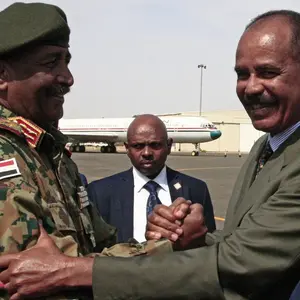
From late 2021 onward, escalating disputes over the fertile Al‑Fashaga region and cross‑border incursions triggered a sharpened security posture in Ethiopia. The Ethiopian Air Force (EAF) moved quickly to assert aerial readiness, deploying fighter jets and modernizing its operations in response to Sudan’s artillery fire, air raids, and troop advances along the shared border.
🔥 Escalation over Al‑Fashaga and the Triggering Incident
In September and December 2021, Sudanese forces moved into the contested area of Al‑Fashaga—a territory cultivated by Ethiopian farmers but claimed by Khartoum. Reports indicate deadly clashes, with Sudan eventually expelling Ethiopian militia and controlling key terrain points such as Khor Yabis and Jabal Tayara. Sudanese artillery and air strikes reportedly supported these ground gains. Ethiopia strongly condemned the activity and alleged violations of its sovereignty. Addis Ababa dispatched fighter aircraft to respond to what it portrayed as a dangerous regression toward open conflict.
In one early 2021 episode, Sudan formally accused Ethiopia of having a military aircraft cross into Sudanese airspace—calling it a hazardous escalation. The Ethiopian defense ministry denied the claim and emphasized a broader push for peaceful resolution.
✈️ Fighter Jet Deployments and Air Scrambles
By mid‑2022, Ethiopian fighter jets were scrambled in response to renewed Sudanese activity. The EAF, on high alert, launched multiple sorties along the border after Sudan reportedly captured contested high points and shelled Ethiopian positions from artillery and aircraft. According to military analysts, these jets flew sorties to assert Ethiopian control and signal deterrence. The EAF chief affirmed that the force was undergoing modernization, with pilots and ground crews prepared to defend national airspace.
Major General Yilma Merdasa publicly declared the EAF was reorganizing, improving readiness, and undergoing structural reform to meet threats from Sudanese air and ground forces.
🛡️ Intelligence and Border Monitoring
Ethiopia expanded its intelligence collection along the Sudan border, focusing on monitoring Sudanese troop deployments, militia movements, and possible weapons support for Tigrayan or Benishangul‑Gumuz rebel groups. UN and diplomatic sources highlighted memories of Sudan sheltering tens of thousands of Ethiopian fighters and opposition cadres—raising strategic alarms in Addis. This led to increased aerial surveillance and enhanced cooperation between intelligence agencies.

⚖️ Diplomatic Engagements and Political Signaling
In June 2025, Ethiopia dispatched a senior delegation to Port Sudan, led by its intelligence chief and East African affairs adviser. The visit underscored Ethiopia’s preference for strategic engagement aimed at stabilizing the border, deterring insurgent flows, and counteracting support networks allegedly based in Sudan. The outreach reinforced Ethiopia’s emphasis on deterrence by presence, combining diplomacy with visible air force readiness.
Despite high tensions, Prime Minister Abiy Ahmed repeatedly ruled out intentional war with Sudan, framing Ethiopia’s stance as defensive—not expansionist. His tone underscored deep reluctance to engage militarily, even as air force assets were visibly deployed.
🚁 Complementary Roles: Eastern Command and Somali Focus
While the northern frontier remained simmering, Ethiopia’s Eastern Command remained active—particularly along the complex Somalia border. In late 2024, the Air Force’s 3rd Air Division entered state of high readiness status, posturing against possible external provocations. Though unrelated to Sudan, such increased alertness indicates that Ethiopia’s air strategy across regions became more proactive—positioning the EAF as a fast-response force in volatile theaters.
🌍 Regional Complexity and Air Force Implications
Ethiopia’s air response is tightly interwoven with broader regional dynamics. Shifting alliances—including relations between the Sudanese Armed Forces (SAF), Rapid Support Forces (RSF), Eritrea, Egypt, and internal Ethiopian opposition—have heightened Addis Ababa’s security calculus. Reports suggest Sudan facilitated support to TPLF fighters, while Eritrean influence also complicates the picture. Ethiopian air deployments, surveillance, and strategic messaging responded to this web of proxies and cross-border activity.
Additionally, the dispute over the Grand Ethiopian Renaissance Dam (GERD) further inflamed Sudan–Ethiopian relations. Diplomatically and militarily, Ethiopia has bolstered its air surveillance apparatus to prevent external threats from exploiting border instability to pressure Addis on the dam issue.
🧭 Strategic Summary: Air Force Role
The Ethiopian Air Force had played a central role in defending sovereignty across the Sudan border through several key initiatives:
- Fighter jet deployments and scramble responses to deter and counter Sudanese incursions in Al‑Fashaga.
- Operational readiness transformation, with EAF modernization programs publicized to signal both capacity and resolve.
- Increased aerial surveillance and intelligence liaison, aimed at tracking cross-border militia, refugee militarization, and proxy support from Sudan.
- Diplomatic signaling: high-level engagements with Sudanese officials, backed by air force posture, underscored Ethiopia’s security concerns.
Wide readiness alignment, as evidenced by elevated alert status of Eastern and Northern Commands, showing Ethiopian airpower stretched across regional fronts.
📌 Conclusion: Air Force as Sovereign Safeguard
Ethiopia’s air power posture since 2021 demonstrates deliberate use of aviation to navigate a volatile border with Sudan. Through fighter responses, elevated readiness, intelligence integration, and diplomatic outreach, the Ethiopian Air Force has functioned as both a deterrent and political instrument. Though the rhetoric emphasized restraint, the visible deployment of jets and heightened operational preparedness underscore Ethiopia’s commitment to safeguarding its territorial integrity amid regional instability.


